

News
SpaceX’s Falcon 9 rideshare program secures its first customer
On August 22nd, spaceflight startup Momentus Space and launch heavyweight SpaceX announced the first public launch contract to fall under the umbrella of the latter company’s recently-announced Satellite Rideshare Program.
Meant to provide a reliable, consistent, and affordable form of shuttle-like access to orbit, SpaceX’s rideshare program will – pending demand – involve no less than one dedicated Falcon 9 launch per year, capable of placing 15+ metric tons (33,000+ lbs) into low Earth orbit. Although SpaceX’s rideshare proposal is far from revolutionary, the company’s contract with Momentus Space appears to be more than a basic launch service agreement, potentially opening doors for far more flexible rideshare launches in the future.
Since its November 2017 founding, Momentus Space has been able to put money where its mouth is far more so than any comparable space tug hopeful, of which there are several. The concept that has helped Momentus raise nearly $34M in just 1.5 years is relatively simple: build a spacecraft whose sole purpose is to propel other spacecraft to their final orbit(s).
Known as a space tug, the concept is about as old as practical spaceflight itself, and interest in actually developing the concept from paper to hardware has grown exponentially in the last 5-10 years, thanks in large part to an unprecedented boom in commercial spaceflight activity. Applied more specifically, modern efforts like Momentus tend to have ambitious goals couched behind much more achievable (and marketable) concepts.
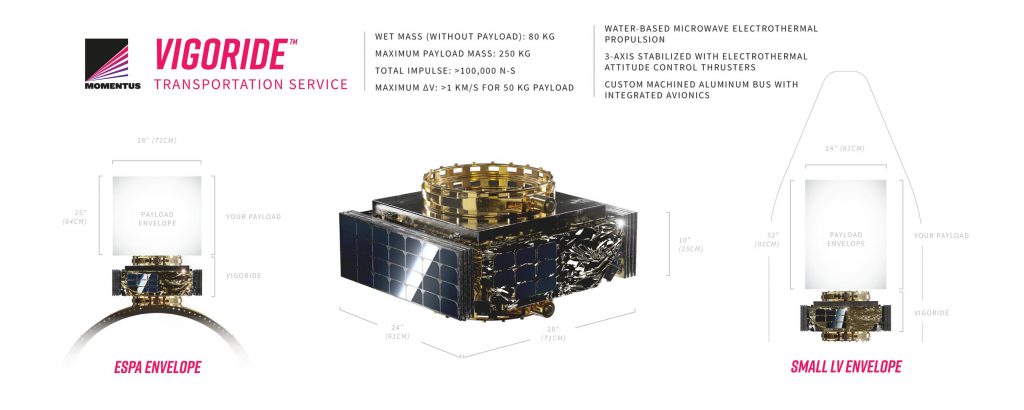
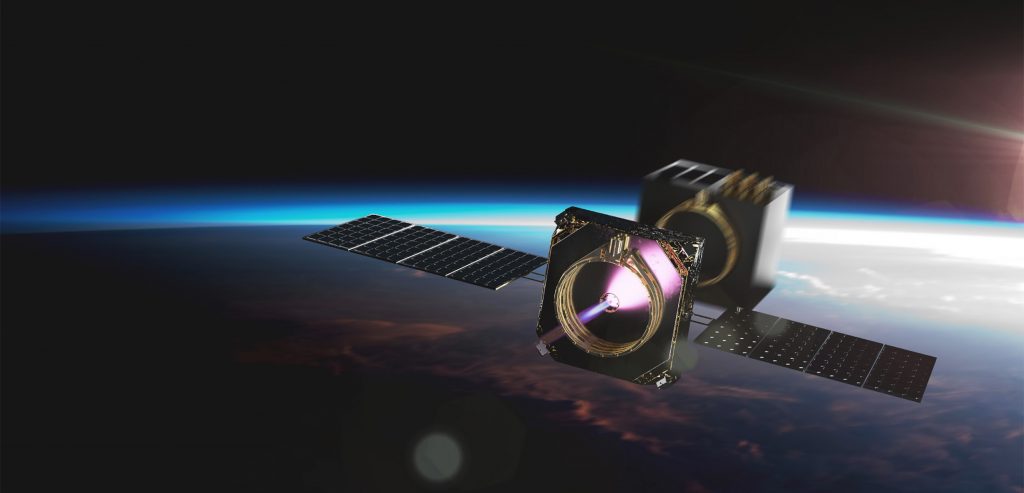
Momentus Space’s first goal is to bridge the gap between the low cost of smallsat rideshare missions on large rockets and the convenience of smallsat launches on much smaller rockets by building lightweight, simple, and cheap orbital tugs. The first tug the company wants to field is called Vigoride and will measure approximately 2ft x 2ft (0.4m²) and weigh just 80 kg (175 lb) fully fueled. If launched to a 600 km (370 mi) sun-synchronous orbit (SSO), Vigoride will be able to deliver as much as 220 kg (~500 lb) to a final circular orbit of ~1500 km (930 mi) or place 250 kg (550 lb) of satellites into 10+ separate orbits.
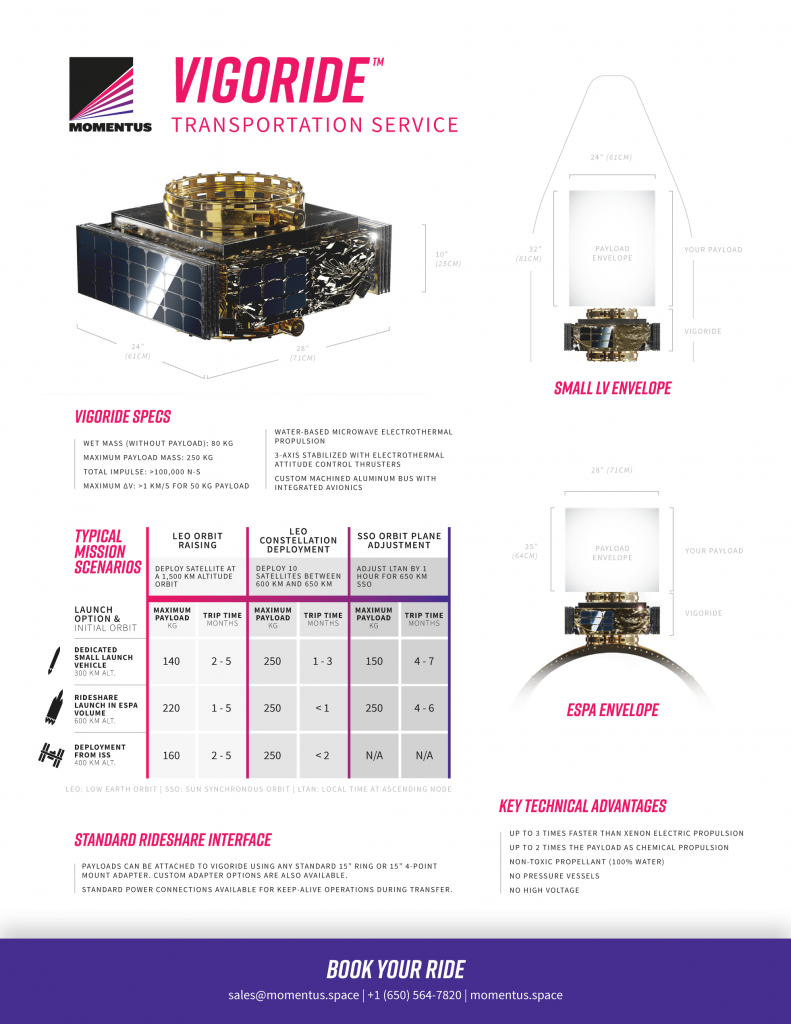
Water plasma rockets (!?)
By far the most innovative and potentially revolutionary aspect of Momentus’ plans is its custom propulsion system of choice: water plasma rockets. In simple terms, Momentus space tugs would quite literally turn water and sunlight into a method of in-space propulsion that can offer both moderate efficiency and relatively high thrust. Using solar arrays, the space tug would charge batteries that would then power an extremely high-power microwave electrothermal thruster (MET).
In the case of Momentus, the exotic form of propulsion uses microwaves to almost instantaneously turn liquid water into plasma, an ionized, electrically-charged gas that can then be directed with a magnetic nozzle to produce thrust. Aside from the decent performance it offers, water-based MET allows a given satellite to completely avoid heavy pressure vessels, doesn’t require extremely high voltages, and uses a fully non-toxic propellant (water).
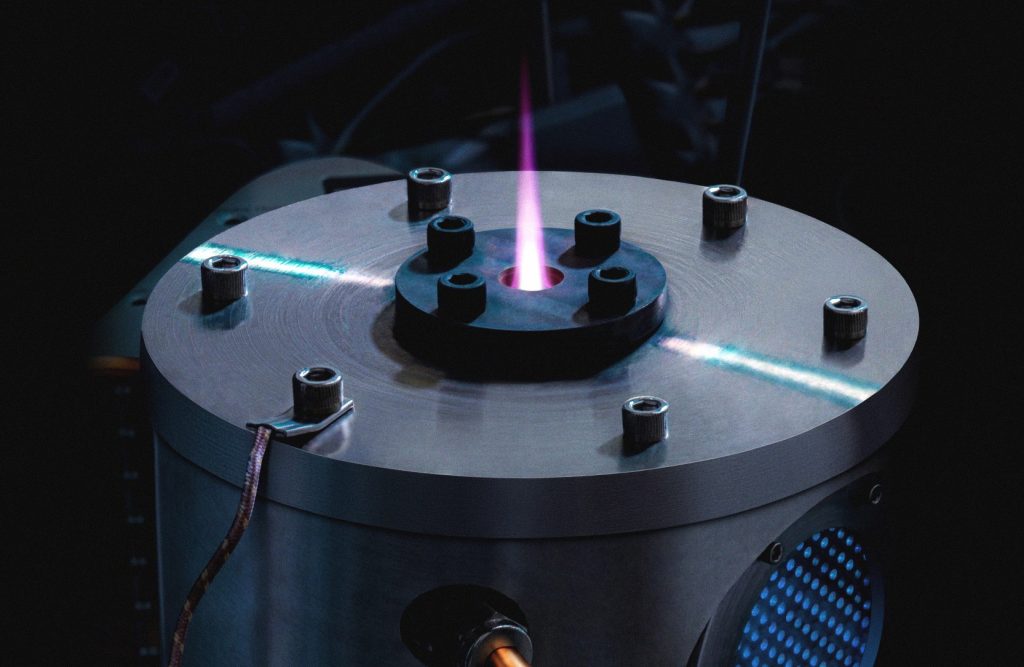
The fact that pure water is so incredibly benign, non-toxic, and accessible opens up a realm of possibilities. Momentus already has plans to launch Vigorides from the International Space Station, and that could eventually expand into actual in-space reuse in which water-powered satellites might dock with the ISS to load more water and pick up new payloads.
In the case of SpaceX, it appears that the company has inked a more two-way agreement with Momentus, in the sense that prospective customers of SpaceX’s Satellite Rideshare Program might actually be able to arrange for their satellites to be included on Vigoride. Vigoride would then be able to deliver each payload – up to 250 kg worth – to its own orbit, potentially far more convenient than simply being kicked off at a lone orbital bus stop. As Momentus matures its technology and moves from Vigoride to Vigoride Extended and beyond, a partnership with SpaceX’s Satellite Rideshare Program could grow into an almost unbeatable turnkey option for the smallsat industry.
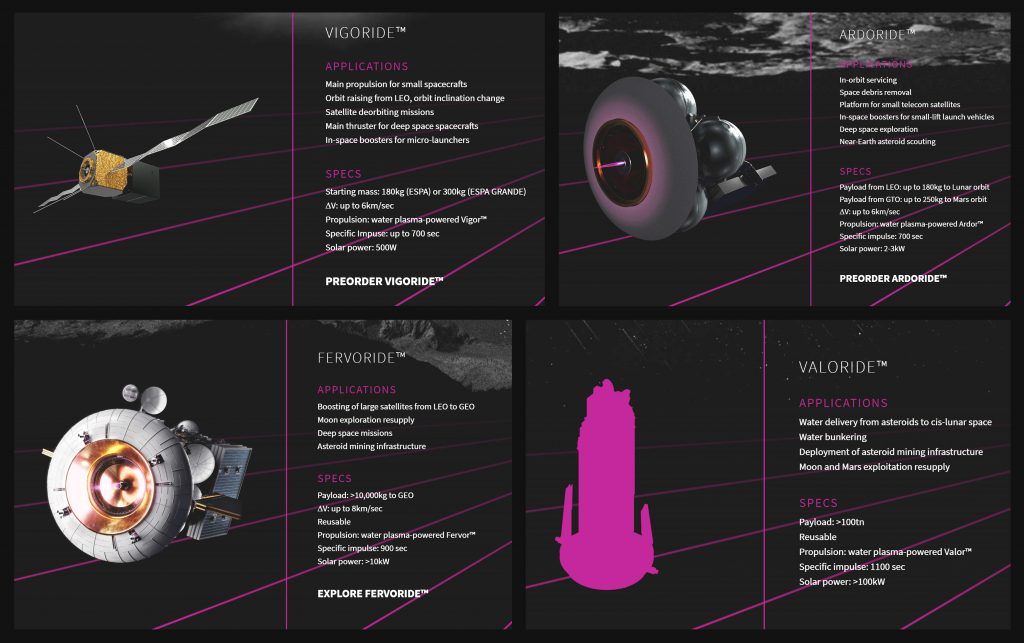
Momentus took its first major step towards building capable and marketable space tugs in July 2019 when the company launched X1, its first orbit-worthy satellite prototype. Although the company has been dead silent as to the actual status of that prototype, even a failure would still serve as an invaluable learning opportunity, even if it would be an inconvenient setback. Vigoride’s first test flight was planned as early as late 2019, although the status of that schedule is uncertain.
Check out Teslarati’s Marketplace! We offer Tesla accessories, including for the Tesla Cybertruck and Tesla Model 3.
Elon Musk
Why Tesla’s Q3 could be one of its biggest quarters in history
Tesla could stand to benefit from the removal of the $7,500 EV tax credit at the end of Q3.

Tesla has gotten off to a slow start in 2025, as the first half of the year has not been one to remember from a delivery perspective.
However, Q3 could end up being one of the best the company has had in history, with the United States potentially being a major contributor to what might reverse a slow start to the year.
Earlier today, the United States’ House of Representatives officially passed President Trump’s “Big Beautiful Bill,” after it made its way through the Senate earlier this week. The bill will head to President Trump, as he looks to sign it before his July 4 deadline.
The Bill will effectively bring closure to the $7,500 EV tax credit, which will end on September 30, 2025. This means, over the next three months in the United States, those who are looking to buy an EV will have their last chance to take advantage of the credit. EVs will then be, for most people, $7,500 more expensive, in essence.
The tax credit is available to any single filer who makes under $150,000 per year, $225,000 a year to a head of household, and $300,000 to couples filing jointly.
Ending the tax credit was expected with the Trump administration, as his policies have leaned significantly toward reliance on fossil fuels, ending what he calls an “EV mandate.” He has used this phrase several times in disagreements with Tesla CEO Elon Musk.
Nevertheless, those who have been on the fence about buying a Tesla, or any EV, for that matter, will have some decisions to make in the next three months. While all companies will stand to benefit from this time crunch, Tesla could be the true winner because of its sheer volume.
If things are done correctly, meaning if Tesla can also offer incentives like 0% APR, special pricing on leasing or financing, or other advantages (like free Red, White, and Blue for a short period of time in celebration of Independence Day), it could see some real volume in sales this quarter.
You can now buy a Tesla in Red, White, and Blue for free until July 14 https://t.co/iAwhaRFOH0
— TESLARATI (@Teslarati) July 3, 2025
Tesla is just a shade under 721,000 deliveries for the year, so it’s on pace for roughly 1.4 million for 2025. This would be a decrease from the 1.8 million cars it delivered in each of the last two years. Traditionally, the second half of the year has produced Tesla’s strongest quarters. Its top three quarters in terms of deliveries are Q4 2024 with 495,570 vehicles, Q4 2023 with 484,507 vehicles, and Q3 2024 with 462,890 vehicles.
Elon Musk
Tesla Full Self-Driving testing continues European expansion: here’s where
Tesla has launched Full Self-Driving testing in a fifth European country ahead of its launch.

Tesla Full Self-Driving is being tested in several countries across Europe as the company prepares to launch its driver assistance suite on the continent.
The company is still working through the regulatory hurdles with the European Union. They are plentiful and difficult to navigate, but Tesla is still making progress as its testing of FSD continues to expand.
Today, it officially began testing in a new country, as more regions open their doors to Tesla. Many owners and potential customers in Europe are awaiting its launch.
On Thursday, Tesla officially confirmed that Full Self-Driving testing is underway in Spain, as the company shared an extensive video of a trip through the streets of Madrid:
Como pez en el agua …
FSD Supervised testing in Madrid, Spain
Pending regulatory approval pic.twitter.com/txTgoWseuA
— Tesla Europe & Middle East (@teslaeurope) July 3, 2025
The launch of Full Self-Driving testing in Spain marks the fifth country in which Tesla has started assessing the suite’s performance in the European market.
Across the past several months, Tesla has been expanding the scope of countries where Full Self-Driving is being tested. It has already made it to Italy, France, the Netherlands, and Germany previously.
Tesla has already filed applications to have Full Self-Driving (Supervised) launched across the European Union, but CEO Elon Musk has indicated that this particular step has been the delay in the official launch of the suite thus far.
In mid-June, Musk revealed the frustrations Tesla has felt during its efforts to launch its Full Self-Driving (Supervised) suite in Europe, stating that the holdup can be attributed to authorities in various countries, as well as the EU as a whole:
Tesla Full Self-Driving’s European launch frustrations revealed by Elon Musk
“Waiting for Dutch authorities and then the EU to approve. Very frustrating and hurts the safety of people in Europe, as driving with advanced Autopilot on results in four times fewer injuries! Please ask your governing authorities to accelerate making Tesla safer in Europe.”
Waiting for Dutch authorities and then the EU to approve.
Very frustrating and hurts the safety of people in Europe, as driving with advanced Autopilot on results in four times fewer injuries!
Please ask your governing authorities to accelerate making Tesla safer in Europe. https://t.co/QIYCXhhaQp
— Elon Musk (@elonmusk) June 11, 2025
Tesla said last year that it planned to launch Full Self-Driving in Europe in 2025.
Elon Musk
xAI’s Memphis data center receives air permit despite community criticism
xAI welcomed the development in a post on its official xAI Memphis account on X.

Elon Musk’s artificial intelligence startup xAI has secured an air permit from Memphis health officials for its data center project, despite critics’ opposition and pending legal action. The Shelby County Health Department approved the permit this week, allowing xAI to operate 15 mobile gas turbines at its facility.
Air permit granted
The air permit comes after months of protests from Memphis residents and environmental justice advocates, who alleged that xAI violated the Clean Air Act by operating gas turbines without prior approval, as per a report from WIRED.
The Southern Environmental Law Center (SELC) and the NAACP has claimed that xAI installed dozens of gas turbines at its new data campus without acquiring the mandatory Prevention of Significant Deterioration (PSD) permit required for large-scale emission sources.
Local officials previously stated the turbines were considered “temporary” and thus not subject to stricter permitting. xAI applied for an air permit in January 2025, and in June, Memphis Mayor Paul Young acknowledged that the company was operating 21 turbines. SELC, however, has claimed that aerial footage shows the number may be as high as 35.
Critics are not giving up
Civil rights groups have stated that they intend to move forward with legal action. “xAI’s decision to install and operate dozens of polluting gas turbines without any permits or public oversight is a clear violation of the Clean Air Act,” said Patrick Anderson, senior attorney at SELC.
“Over the last year, these turbines have pumped out pollution that threatens the health of Memphis families. This notice paves the way for a lawsuit that can hold xAI accountable for its unlawful refusal to get permits for its gas turbines,” he added.
Sharon Wilson, a certified optical gas imaging thermographer, also described the emissions cloud in Memphis as notable. “I expected to see the typical power plant type of pollution that I see. What I saw was way worse than what I expected,” she said.
-

 Elon Musk3 days ago
Elon Musk3 days agoTesla investors will be shocked by Jim Cramer’s latest assessment
-

 News1 week ago
News1 week agoTesla Robotaxi’s biggest challenge seems to be this one thing
-

 News2 weeks ago
News2 weeks agoTexas lawmakers urge Tesla to delay Austin robotaxi launch to September
-

 Elon Musk2 weeks ago
Elon Musk2 weeks agoFirst Look at Tesla’s Robotaxi App: features, design, and more
-

 Elon Musk2 weeks ago
Elon Musk2 weeks agoxAI’s Grok 3 partners with Oracle Cloud for corporate AI innovation
-

 News2 weeks ago
News2 weeks agoWatch Tesla’s first driverless public Robotaxi rides in Texas
-

 News2 weeks ago
News2 weeks agoSpaceX and Elon Musk share insights on Starship Ship 36’s RUD
-

 News2 weeks ago
News2 weeks agoTesla has started rolling out initial round of Robotaxi invites


















